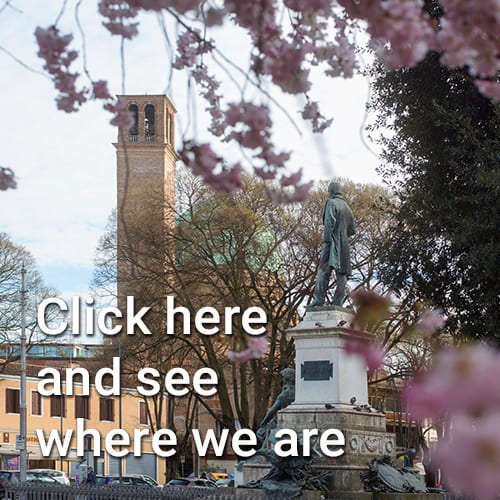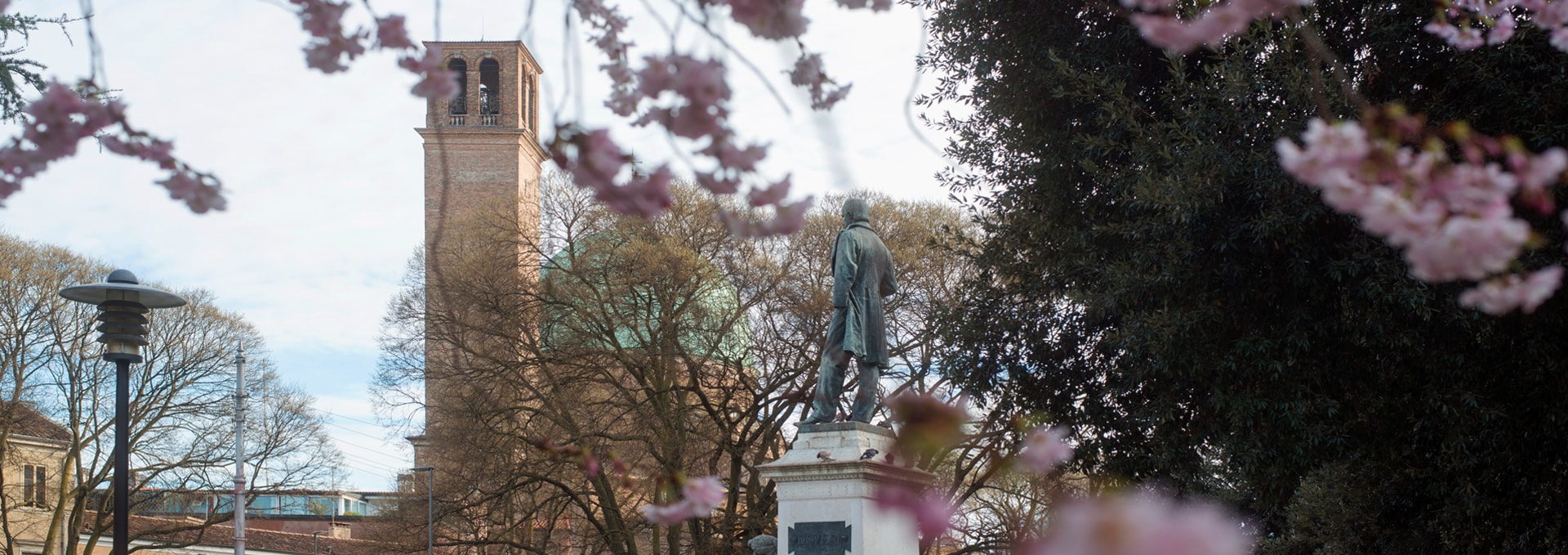
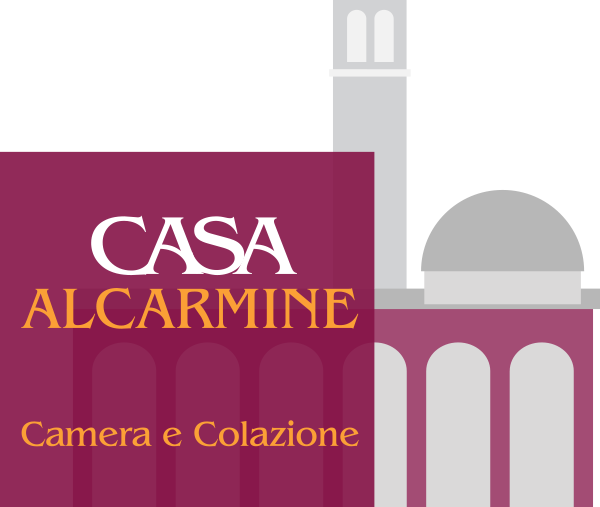
Where we are
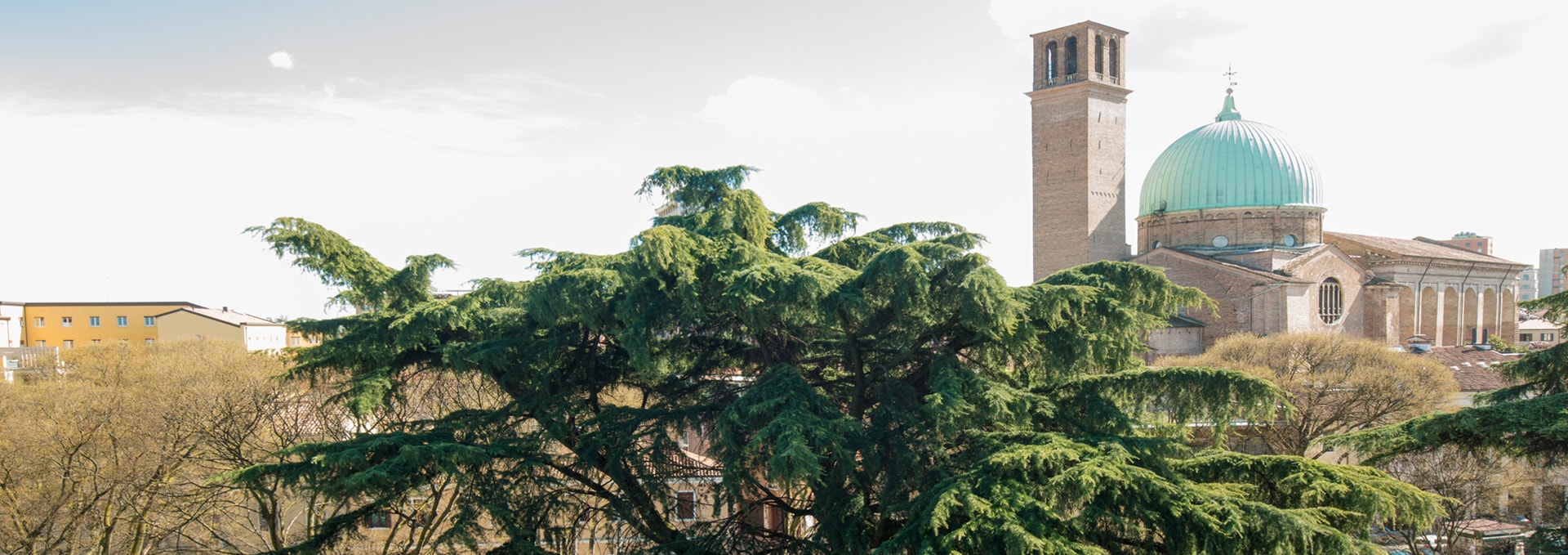

Where we are


Where we are


Where we are
It is very close to the railway station, (a 10-minute walk) and a few minutes walk from the historic center, the Scrovegni Chapel and many other points of artistic and historical interest of the city.
Located in the heart of Padua and of easy access by city buses and trams, it can also be easily reached by car from the exits of Padua West and East, and from all the ring roads.
It is easily reachable on foot from the railway station, by tram and by buses n. 6, 11 and 15 stop Piazzale Mazzini.
On the side bar, you can find all the information to reach us by public transport.
Casa Al Carmine features 9 private parking spaces accessible through the driveway, with video-surveillance.In the streets and squares nearby, there 's the possibility' to park for free or for a fee..
You are in piazza mazzini
and do you want to reach us?
Click here and see where we are
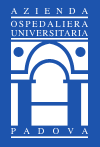
PADUA HOSPITAL
Via Giustiniani, 2 - 35128 PadovaTel. 049 8211111 - U.R.P. 049 8213200 - 049 8212090
PEC: azosp.padova@legalmail.it
E-mail: urponline@sanita.padova.it
website: www.sanita.padova.it
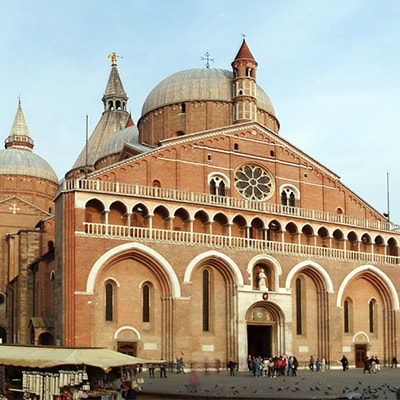
BASILICA OF SAINT ANTHONY
The basilica is one of the main Catholic places of worship in the city of Padua, in Veneto. Known by the people of Padua simply as the Saint, it is one of the largest churches in the world and is visited annually by over six million pilgrims, making it one of the most venerated shrines in the Christian world. It houses the relics of Saint Anthony of Padua. The square in front of it hosts the equestrian monument of Donatello, the Gattamelata. Source wikipedia.website: www.basilicadelsanto.it
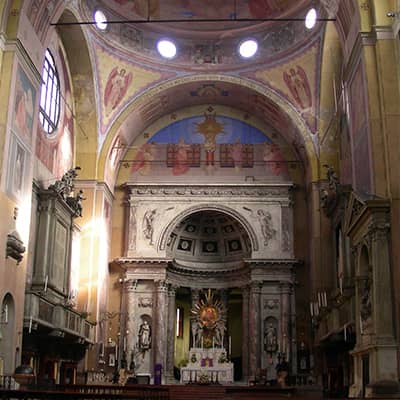
BASILICA OF THE CARMINE
The Basilica del Carmine is a Catholic church in Padua, located in Piazza Francesco Petrarca. It was built in the 16th century on a project by Lorenzo da Bologna starting from an older 14th century church. Its construction began in 1335, but the consecration dates back to 1446. The building has been remodeled several times over the centuries and the current facade was completed in the eighteenth century. The original facade had a loggia, as evidenced by some seventeenth-century paintings that are located inside the Basilica, along the nave. These paintings show the miracles wrought by the Madonna del Carmelo for the Paduans. Source wikipedia.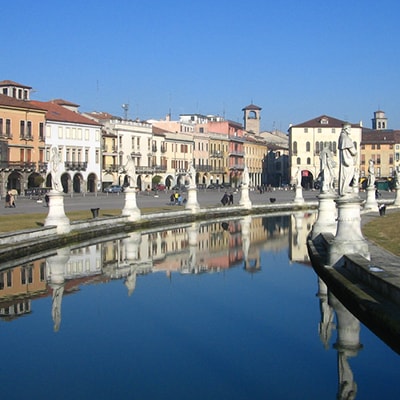
THE “MEADOW OF THE VALLEY”
The Prato della Valle is the largest square in the city of Padua and among the largest in Italy and Europe. The current configuration dates back to the late eighteenth century and is characterized by an elliptical central island, called Memmia island, surrounded by a channel (fed by the Alicorno) on whose banks there is a double ring of 78 statues (40 along the outer ring and 38 along the inner one).Source wikipedia.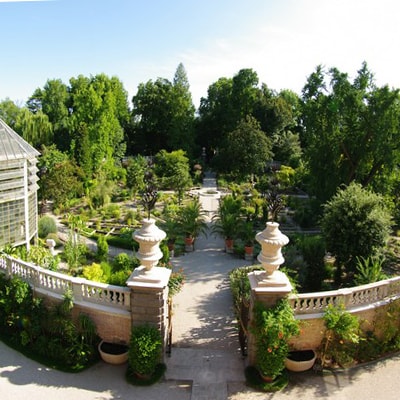
BOTANICAL GARDEN
The botanical garden of Padua was founded in 1545 and is the oldest university botanical garden still located in its original location. The garden currently has an area of almost 22 000 square meters and contains over 6000 cultivated plants. Many plants are introduced for the first time in Italy through the botanical garden. Five new greenhouses have recently been introduced, inserted in a glass and steel gallery, which reproduce as many biomes, areas of the Earth characterized by climatic and plant uniformity. In 1997 it was included in the list of World Heritage Sites by UNESCO. Source wikipedia.website: www.ortobotanico.unipd.it
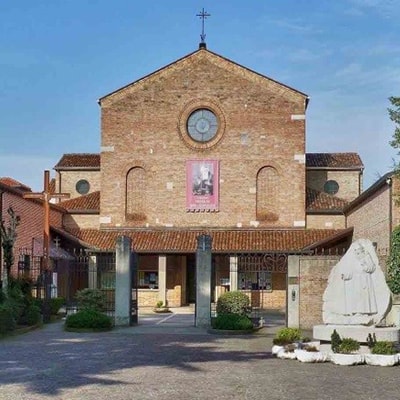
SANCTUARY OF SAN LEOPOLDO
The sanctuary of San Leopoldo Mandic, place of prayer, devotion and celebration of Penance - Piazzale S. Croce, 44 - 35123 Padua (Padua) Italy. Father Leopoldo Mandić died on July 30, 1942. From that day on, the devotion that had spread around him and his reputation as a saint could be seen at first hand, in a certain sense, along with the conviction that, through his intercession, graces and miracles were obtained. In 1946 the practices for the recognition of his holiness began. Pope Paul VI proclaimed him blessed on 2 May 1976 and John Paul II declared him a saint on 16 October 1983. There is an uninterrupted flow of pilgrims who come to Padua, to the Capuchin convent, to seek a reflection of his holiness, to ask for thanks from God or deeper conversion.website: www.leopoldomandic.it
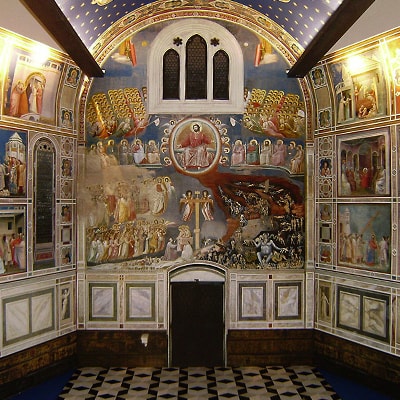
THE SCROVEGNI CHAPEL
The Scrovegni chapel (also known as the Arena chapel) is located in the historic centre of Padua and houses a famous cycle of frescoes by Giotto from the early 14th century, considered one of the masterpieces of Western art. The chapel was built and frescoed between 1303 and the early months of 1305 by Enrico Scrovegni, a very wealthy banker from Padua, for the benefit of his family and the entire city population. Source wikipedia. Source wikipedia.website: www.cappelladegliscrovegni.it
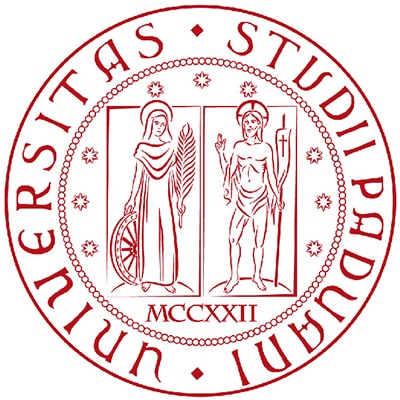
THE UNIVERSITY OF PADUA
The University of Padua is one of the most famous universities in Italy, and among the oldest in the world, dating back to 1222. The University's motto is Universa Universis Patavina Libertas ("all in one, for all, freedom in the University of Padua"), to underline the great freedom of thought, historically granted by the University to teachers and students. Source wikipedia.website: www.unipd.it
TO RESERVE
Visit the official website of the City of Padua for all the information and events of cultural interest constantly updated.website: www.padovanet.it
padova culture: http://padovacultura.padovanet.it/
It is very close to the railway station, (a 10-minute walk) and a few minutes walk from the historic center, the Scrovegni Chapel and many other points of artistic and historical interest of the city.
Located in the heart of Padua and of easy access by city buses and trams, it can also be easily reached by car from the exits of Padua West and East, and from all the ring roads.
It is easily reachable on foot from the railway station, by tram and by buses n. 6, 11 and 15 stop Piazzale Mazzini.
On the side bar, you can find all the information to reach us by public transport.
Casa Al Carmine features 9 private parking spaces accessible through the driveway, with video-surveillance.In the streets and squares nearby, there 's the possibility' to park for free or for a fee..
You are in piazza mazzini
and do you want to reach us?
Click here and see where we are

PADUA HOSPITAL
Via Giustiniani, 2 - 35128 PadovaTel. 049 8211111 - U.R.P. 049 8213200 - 049 8212090
PEC: azosp.padova@legalmail.it
E-mail: urponline@sanita.padova.it
website: www.sanita.padova.it

BASILICA OF SAINT ANTHONY
The basilica is one of the main Catholic places of worship in the city of Padua, in Veneto. Known by the people of Padua simply as the Saint, it is one of the largest churches in the world and is visited annually by over six million pilgrims, making it one of the most venerated shrines in the Christian world. It houses the relics of Saint Anthony of Padua. The square in front of it hosts the equestrian monument of Donatello, the Gattamelata. Source wikipedia.website: www.basilicadelsanto.it

BASILICA OF THE CARMINE
The Basilica del Carmine is a Catholic church in Padua, located in Piazza Francesco Petrarca. It was built in the 16th century on a project by Lorenzo da Bologna starting from an older 14th century church. Its construction began in 1335, but the consecration dates back to 1446. The building has been remodeled several times over the centuries and the current facade was completed in the eighteenth century. The original facade had a loggia, as evidenced by some seventeenth-century paintings that are located inside the Basilica, along the nave. These paintings show the miracles wrought by the Madonna del Carmelo for the Paduans. Source wikipedia.
THE “MEADOW OF THE VALLEY”
The Prato della Valle is the largest square in the city of Padua and among the largest in Italy and Europe. The current configuration dates back to the late eighteenth century and is characterized by an elliptical central island, called Memmia island, surrounded by a channel (fed by the Alicorno) on whose banks there is a double ring of 78 statues (40 along the outer ring and 38 along the inner one).Source wikipedia.
BOTANICAL GARDEN
The botanical garden of Padua was founded in 1545 and is the oldest university botanical garden still located in its original location. The garden currently has an area of almost 22 000 square meters and contains over 6000 cultivated plants. Many plants are introduced for the first time in Italy through the botanical garden. Five new greenhouses have recently been introduced, inserted in a glass and steel gallery, which reproduce as many biomes, areas of the Earth characterized by climatic and plant uniformity. In 1997 it was included in the list of World Heritage Sites by UNESCO. Source wikipedia.website: www.ortobotanico.unipd.it

SANCTUARY OF SAN LEOPOLDO
The sanctuary of San Leopoldo Mandic, place of prayer, devotion and celebration of Penance - Piazzale S. Croce, 44 - 35123 Padua (Padua) Italy. Father Leopoldo Mandić died on July 30, 1942. From that day on, the devotion that had spread around him and his reputation as a saint could be seen at first hand, in a certain sense, along with the conviction that, through his intercession, graces and miracles were obtained. In 1946 the practices for the recognition of his holiness began. Pope Paul VI proclaimed him blessed on 2 May 1976 and John Paul II declared him a saint on 16 October 1983. There is an uninterrupted flow of pilgrims who come to Padua, to the Capuchin convent, to seek a reflection of his holiness, to ask for thanks from God or deeper conversion.website: www.leopoldomandic.it

THE SCROVEGNI CHAPEL
The Scrovegni chapel (also known as the Arena chapel) is located in the historic centre of Padua and houses a famous cycle of frescoes by Giotto from the early 14th century, considered one of the masterpieces of Western art. The chapel was built and frescoed between 1303 and the early months of 1305 by Enrico Scrovegni, a very wealthy banker from Padua, for the benefit of his family and the entire city population. Source wikipedia. Source wikipedia.website: www.cappelladegliscrovegni.it

THE UNIVERSITY OF PADUA
The University of Padua is one of the most famous universities in Italy, and among the oldest in the world, dating back to 1222. The University's motto is Universa Universis Patavina Libertas ("all in one, for all, freedom in the University of Padua"), to underline the great freedom of thought, historically granted by the University to teachers and students. Source wikipedia.website: www.unipd.it
TO RESERVE
Visit the official website of the City of Padua for all the information and events of cultural interest constantly updated.website: www.padovanet.it
padova culture: http://padovacultura.padovanet.it/

